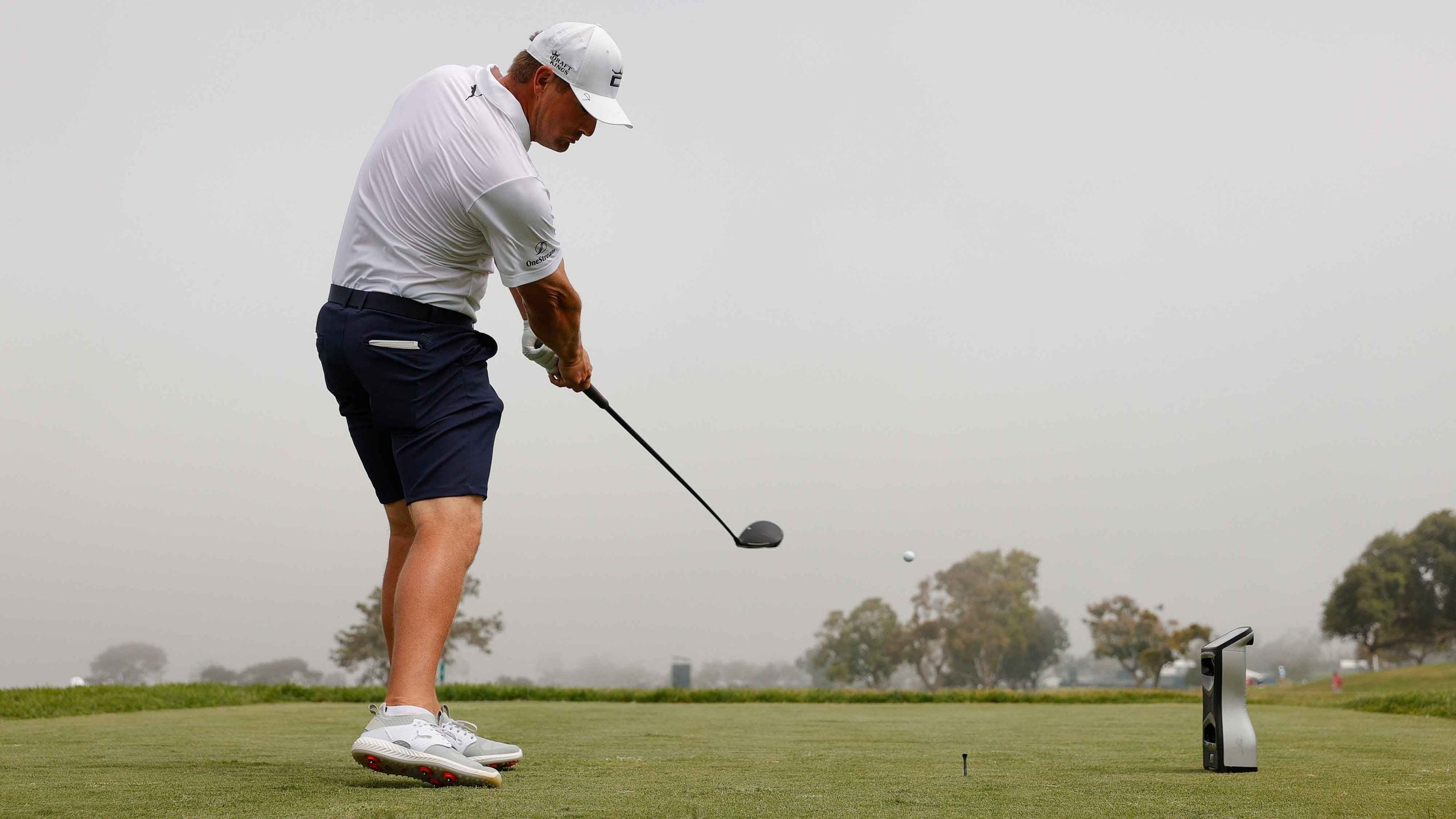GOLF has partnered with CDW and VMware to explore not only how the world’s best golfers use technology to secure game plans for the U.S. Open but also how data can point toward which 2021 U.S. Open competitors are primed for a big week. Here, we illuminate Bryson DeChambeau’s strategy for Torrey Pines.
***
As Bryson DeChambeau prepares to defend his title this week at the 2021 U.S. Open at Torrey Pines, he’s seemingly plugged into the matrix. Every shot he hits on the range — and nearly every shot he hits during practice rounds on the course — is captured by launch monitors that spit out a multitude of numbers.
While many players in the modern era use a launch monitor, DeChambeau actually uses two simultaneously.
He uses a FlightScope X3 and a Foresight GC Quad to capture both normalized data (what the ball would do without wind) and actual data (what the ball is actually doing) to figure out how the ball is performing in a given environment.
“We’re definitely trying to look at normalized data so we can get a good understanding of how much the wind is affecting the golf ball in this environment,” DeChambeau told GOLF.com on Tuesday. “For example, if the [GC Quad] device tells you I’m hitting it 120 yards, and then on radar, on FlightScope, it’s saying it went 125 yards, well, obviously there’s 5 yards of wind. That’s how we utilize it one way.”
DeChambeau also uses these devices to test equipment — mostly searching to find the “hot” driver head — and to establish his stock yardages for the week. Since conditions change from week-to-week on Tour (wind, humidity, elevation, etc.), DeChambeau wants to make sure he’s dialed in with each club and knows how far those clubs are going on average. He says he mainly looks at four parameters: spin rate, carry, ball speed and swing speed.
On the practice greens, DeChambeau goes through a similar process. He uses a Quintic Ball Roll device that allows him to measure launch angle, topspin and ball speed. For a week like the U.S. Open at Torrey Pines, where the greens are Poa annua grass that can tend to get bumpy, optimizing launch can be crucial.
Compared to the last time the U.S. Open came to Torrey Pines, in 2008, when basically no one was using portable launch monitors, DeChambeau’s methods of preparation are quite complex.
When he steps on to the course for competition, though, his strategy for Torrey Pines is surprisingly simple: “I literally just hit it as far as I can…from there, I’m hitting it into the middle of the greens most of the time, and then inching it towards the flag when I can.”
During practice rounds, DeChambeau figures out where he can and cannot hit driver. As he maneuvers about the course Monday through Wednesday, he looks at his typical landing area and calculates whether the risk of hitting driver is worth the reward. After establishing the driver holes, he just let’s it rip.
“This golf course, they made the strategy really simple,” DeChambeau said. “They made the fairways pretty much the same width all the way down the holes, and they’re very tight. Not everybody is going to be hitting the fairway at 270 yards. So you might as well hit it 330. You might as well hit it 340.”
Of course, this explanation doesn’t account fort the years’ worth of work behind the scenes that DeChambeau has done with the Cobra Golf team to build a set of clubs that perfectly match up with his unique golf swing and approach.
“It’s so funny, people think that it’s this complicated process,” DeChambeau said. “For me, it’s very, very simple. In the beginning, it was very complicated because we were trying to understand and figure out what to do. But with complexity comes simplicity. We made it complex initially, getting all the spin rate numbers and making sure my deviation with my clubs is this and that. Over time, it becomes simple because you just know what it is.”
Want to overhaul your bag for 2021? Find a fitting location near you at GOLF’s affiliate company True Spec Golf. For more on the latest gear news and information, check out our latest Fully Equipped podcast below!
